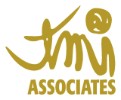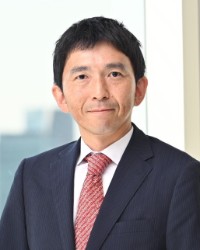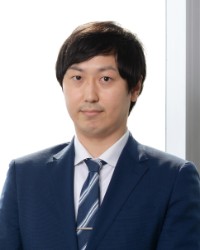Digital Healthcare 2025
Japan
Trends and Developments
The Current Outlook for Digital Healthcare in Japan
General
Japan’s rapidly ageing population, with approximately 30% aged 65 or older, presents significant societal challenges, including a shrinking workforce, increasing regional healthcare disparities, and rising social security costs. In response, Japan has accelerated its digital health transformation, leveraging technologies such as artificial intelligence (AI), the Internet of Things (IoT), and data analytics.
The COVID-19 pandemic acted as a catalyst, prompting a shift towards remote work and non-contact activities starting in 2020. This transition facilitated the adoption of digital health solutions.
In 2025, Japan’s digital health landscape is evolving to include expanded remote medical consultations, the proliferation of health-related mobile apps, and a heightened focus on the secure and effective use of healthcare data. Efforts are underway to integrate these technologies into the public health infrastructure, with ongoing discussions addressing nationwide standards for electronic medical records, interoperability, and privacy protection. Simultaneously, Japan is working to enhance the global competitiveness of its digital health industry, aiming to establish itself as a leader in innovative healthcare solutions.
Government policies
Promotion of medical DX
In 2023, the Japanese government released its “Timetable for the Promotion of Medical DX”, outlining the fundamental concepts and concrete initiatives to accelerate digital transformation (DX) in the healthcare sector. Key measures include:
- development of a nationwide infrastructure for information-sharing;
- expansion of the scope of medical data that can be shared across institutions; and
- standardisation of electronic medical records (EMRs).
A central pillar is the Nationwide Medical Information Platform, which is designed to be built upon and enhance the current online eligibility verification system by integrating cloud-based data-sharing among medical institutions. The platform will encompass not only provision of receipts and specific health checkup data, but also vaccination records, electronic prescriptions, EMRs, and other healthcare information generated by medical and long-term care providers.
This platform is intended to facilitate timely and appropriate information exchange among municipalities, care providers, and other relevant stakeholders. Full-scale operation is scheduled for fiscal year 2025. Once implemented, the platform is expected to support the exchange of essential documents – such as referral letters, health checkup results, and discharge summaries – as well as six key categories of critical medical data: diagnoses, allergies, infectious diseases, drug contraindications, test results, and prescriptions.
Start-up policy
In June 2023, the Ministry of Health, Labour and Welfare (the MHLW) established a dedicated project team to evaluate and advance initiatives aimed at strengthening start-up companies in the healthcare sector. The team developed a blueprint to consolidate concrete policy proposals across four key areas, including medical DX and medical devices.
In 2025, a ten-year fund is scheduled to be launched to support drug discovery start-ups, with the goal of accelerating the development of innovative pharmaceuticals. In parallel, research and development support programmes for healthcare start-ups – primarily led by the Japan Agency for Medical Research and Development (AMED) – are ongoing and continue to play a central role in fostering innovation in the sector.
Expansion of remote medical care
Background
Previously in Japan, medical services were basically administered in a face-to-face manner, while remote medical care was regarded as a supplement to face-to-face treatment and its use was limited. Face-to-face guidance on the administration of medication has traditionally been mandatory; however, in recent years, in addition to the development of information and communication devices, there has been a temporary relaxation of related regulations as a response to the increased demand for online medical treatment and online medication guidance during the COVID-19 pandemic. This has resulted in the widespread use of telemedicine and online medication guidance in Japan.
Telemedicine
Telemedicine in Japan has long been constrained by Article 20 of the Medical Practitioners’ Act, which prohibits physicians from providing medical treatment without a physical examination. To address this, the MHLW released its Telemedicine Guidelines in March 2018, outlining minimum compliance requirements and clarifying that adherence to the Guidelines does not violate Article 20.
Initially, the Guidelines mandated that the first medical consultation be conducted in person, limiting the expansion of telemedicine. However, in response to the increased reliance on remote healthcare during the COVID-19 pandemic, the MHLW revised these Guidelines in January 2022 and March 2023. Subsequently, in June 2023, the MHLW published its “Basic Policy for Promoting Online Medical Treatments and Other Forms of Telemedicine” to facilitate the widespread and appropriate promotion of telemedicine services.
However, as of 2025, the temporary measures that permitted telephone-only initial consultations during the COVID-19 pandemic have been rescinded. These consultations, which were covered by health insurance until July 2023, are no longer authorised or reimbursed. Nevertheless, telephone-based follow-up consultations continue to be eligible for health insurance coverage. In addition, to qualify for additional reimbursement under the National Health Insurance system for online medical services, medical institutions must submit a notification confirming compliance with the required facility standards.
In terms of clinical practice, the Telemedicine Guidelines impose certain limitations, such as restricting initial consultations for specific symptoms and prohibiting the prescription of certain medicines during first-time remote consultations. In addition, consultations conducted solely via telephone or written correspondence are not permitted. Moreover, telemedicine must utilise both visual and auditory communication.
While only licensed physicians can provide telemedicine services, non-physicians may offer health consultations that do not involve medical judgements. These services, not governed by the Medical Practitioners’ Act or the Telemedicine Guidelines, serve as a preliminary step to telemedicine, facilitating early disease detection and offering low barriers to entry.
The Guidelines also permit telesurgery under specific conditions, allowing skilled surgeons to operate remotely with the on-site physicians, using advanced communication technologies. Such procedures must adhere to detailed protocols established by relevant medical associations, which define applicable diseases and patient conditions.
Online medication guidance
In Japan, the separation of prescribing and dispensing practices mandates that physicians prescribe drugs, while pharmacists dispense them. Before the 2020 Amendment to the Act on Securing the Quality, Efficacy and Safety of Products Including Pharmaceuticals and Medical Devices (the “PMD Act”), pharmacists were required to provide face-to-face guidance when dispensing prescription drugs.
The 2020 Amendment introduced online medication guidance, permitting pharmacists to offer consultations via video and audio; however, voice-only (telephone) consultations remain prohibited.
Further deregulation occurred in 2025. On 12 February 2025, a proposed amendment to the PMD Act was approved, which will allow over-the-counter (OTC) drugs to be sold even at locations such as convenience stores without an on-site pharmacist, provided that consumers first receive online consultation from a pharmacist. To ensure safety, the pharmacy providing the online consultation and the retail outlet must be located within the same prefecture. This initiative aims to enhance consumer convenience while maintaining appropriate safety measures.
Additionally, by the end of fiscal year 2025, discussions are expected to take place regarding the potential sale of designated prescription drugs with online medication guidance based on the pharmacist’s discretion.
Example of a telemedicine system
Recently, the number of companies offering telemedicine systems has increased in Japan. For example, Medley Inc provides the “Clinics Telemedicine System”, which is a popular telemedicine system in the Japanese medical platform sector. One of its apps allows for online appointments, video chat examinations, medication guidance, etc, thereby allowing patients to continue receiving treatment without leaving their homes. LINE Healthcare Corporation also provides a telemedicine system called “LINE Doctor”, which enables users to schedule medical appointments, engage in free video calls, and make payments using LINE, the most popular messaging app in Japan.
Increase in healthcare-related apps
Background
In 2020, a therapeutic app made by Cure App, Inc. became the first Software as a Medical Device (SaMD) approved in Japan. This app is designed to help nicotine-dependent patients stop smoking, and is covered by health insurance. Since then, the number of applications for pharmaceutical approval of therapeutic apps has been increasing. Moreover, although there is a functional overlap with therapeutic apps, the development of recording apps, which are provided as a preparatory stage for the development of therapeutic apps, is rapidly increasing as licences and approvals are not required under the PMD Act.
Therapeutic apps and symptom-recording apps
Therapeutic apps are used for the “treatment” of a specific disease in a medical setting and may be circumscribed as follows:
- as SaMD they must be developed, manufactured and sold in accordance with the PMD Act;
- approval to manufacture and sell SaMD in Japan as new medical devices must be acquired from the MHLW after clinical trials have been conducted, which can take several years and be costly; and
- as a long period of time is required until the apps are covered by health insurance, it can take considerable time and money until they reach the market.
Symptom-recording apps are used for “managing the health condition” of a healthy person and “recording the symptoms” of a patient. A typical app is one that is used for recording health information, such as weight and blood pressure, daily. Their characteristics are as follows:
- they cannot express the therapeutic effects of the disease;
- since they are not classified as SaMD it is not necessary to perform procedures based on the PMD Act; and
- their price can be freely set since they are not covered by health insurance.
Such SaMD are programs (software functions) that are intended to diagnose, treat or prevent diseases and are likely to affect a person’s health in the event of a malfunction. Their manufacture and sale are regulated by procedures based on the PMD Act. Therefore, even if they are defined as symptom-recording apps, they may be found to constitute SaMD, depending on their functions and their proposed effects. It is necessary to confirm whether such apps constitute SaMD when they are provided.
In March 2023, the MHLW updated the guidelines on the applicability of the term “medical device” to a program. These guidelines provide a flowchart for determining the applicability of medical devices, outlining the procedures and considerations for making such determinations.
Example of a therapeutic app
In addition to the above-mentioned app for quitting smoking, Cure App, Inc. also received marketing approval for a therapeutic app for hypertension (accepted name: Hypertension Treatment Assistance Program) in April 2022. This was the first case in Japan in which marketing approval was obtained for the software itself, and it is the world’s first marketing approval for a therapeutic app in the field of hypertension. In February 2023, SUSMED, Inc. received marketing approval for a therapeutic app designed to treat insomnia disorders, marking the third such case in Japan. This app supports cognitive behavioural therapy conducted by physicians. In February 2025, Shionogi & Co., Ltd. received marketing approval for a therapeutic app for paediatric ADHD patients, and Cure App obtained marketing approval for a therapeutic app for treating alcohol addiction. It is expected that various therapeutic apps and symptom-recording apps will be introduced in the Japanese market in the future.
Utilisation of healthcare data
Growing expectations for utilisation of healthcare data
In Japan, there have been growing expectations for the utilisation of valuable data in digitised healthcare businesses. In order to promote such utilisation, the government has introduced several mechanisms in the Act on the Protection of Personal Information in Japan (the APPI) and the Act on Anonymised Medical Data That Are Meant to Contribute to Research and Development in the Medical Field (the “Next Generation Medical Infrastructure Act”).
Regarding the APPI, the 2015 Amendment introduced the information category of “anonymously processed information”, making it easier to provide anonymised data externally. The 2020 Amendment also added “pseudonymously processed information” to the APPI and encouraged the utilisation of pseudonymised data internally. Moreover, the 2021 Amendment to the APPI ensures that the same rules apply to public authorities and private companies in the medical and academic sectors, thereby promoting joint public–private partnerships.
For example, Japanese healthcare service providers provide healthcare data as anonymously processed information to pharmaceutical companies and research institutions. These providers include JMDC Inc., Medical Data Vision Co., Ltd., IQVIA Solutions Japan G.K. and Real World Data Co., Ltd.
The Next Generation Medical Infrastructure Act introduced an accreditation system for medical data providers, allowing accredited providers to receive medical information from medical institutions on an opt-out basis. Initially, such accredited providers could only create “anonymously processed medical information”, but the 2023 Amendment allowed them to produce “pseudonymously processed medical information”. This has broadened the use of medical information under the Next Generation Medical Infrastructure Act.
Currently, only a limited number of healthcare data providers have received accreditation. The major accredited providers are Life Data Initiative (LDI), Japan Medical Association, Medical Information Management Organization (J-MIMO) and Fair and Safe Use of Anonymised Standardised Health Data of Japan (FAST-HDJ). As of the end of February 2025, the number of data provision cases under the Next Generation Medical Infrastructure Act is 45 for LDI, 14 for J-MIMO, and 4 for FAST-HDJ. A total of 153 medical institutions are co-operating by sharing medical information with these accredited providers.
Increased complexity of data protection regulations
The regulation of healthcare data has become increasingly complex due to the frequent amendments to the APPI. The APPI has been significantly amended in 2015, 2020 and 2021, since it was first legislated in 2003. These amendments have increased the burden of legal compliance in handling healthcare data.
In 2015, the APPI established new regulations by creating “special care-required personal information”. This information includes medical history, physical/mental disabilities, medical test results, and medical treatment/dispensing. Under the amended APPI, collecting special care-required personal information requires consent from the data subject and it can no longer be provided to third parties in an opt-out manner. The 2015 Amendment to the APPI also introduced a requirement for international transfer and obliged businesses to obtain the data subject’s consent to such transfer.
In 2020, the APPI expanded the rights “to cease use” and “to erase” so that the data subject can broadly exercise these rights if there is a risk of harm to their rights or interests. The 2020 Amendment to the APPI also introduced a new reporting obligation for data breach incidents. If such incident exceeds certain thresholds, the business must report to the regulator and the data subjects. Moreover, the 2020 Amendment strengthened the data transfer requirement. Businesses must now provide the name of the foreign country in question, information on the legal system of such country and the data compliance system of the data recipients, when obtaining consent to the data transfer.
In 2021, Japan’s data protection laws, which had been fragmented by applicable entities, were merged into the APPI, but the data protection regulations remain different for the public and private sectors. This amendment also embodied the blanket academic research exception into separate exceptions for the acquisition, use and provision scenarios.
At present, the government is considering amendments to the APPI. This includes introducing new requirements to process biometric data, such as enhancing transparency and expanding the data subject’s rights for the processing of biometric data.
Modernisation of healthcare information security
Healthcare data security was previously governed by four guidelines across three ministries, but these were merged into two guidelines by such three ministries. This has been done to organise the overly complex security guidelines and to encourage compliance by healthcare organisations and their vendors. In 2023 and 2025, these guidelines were further revised and modernised due to the complexities in protecting medical information from the increasing sophistication of cyber-attacks.
Importance of global data compliance
Given the trends towards global data protection, Japanese companies are increasingly being required to establish healthcare data compliance systems not only for Japanese law but also for foreign laws. This is due to the fact that foreign data protection and privacy laws are becoming more and more stringent over time. For example, the EU enacted the General Data Protection Regulation (GDPR) in 2016. In the US, the California Consumer Privacy Act of 2018 (CCPA) was enacted in California in 2018, followed by a series of laws and regulations in other states. In China, the Personal Information Protection Law (PIPL) was enacted in 2021. In light of this situation, Japanese companies need to comply with these laws, as well as Japanese laws, when handling healthcare data.
Other topics
Individual number card
The Individual Number Card (My Number Card) is an official identification card issued by the Japanese government which allows individuals to access their personal health insurance information, including drug prescriptions, health checkup results, and medical expense notifications, through a government portal. With the user’s consent, such information can also be shared with third parties via an API (Application Programming Interface).
Furthermore, starting in December 2024, the issuance of renewed traditional health insurance cards was discontinued, and the government began transitioning to the My Number Card as the primary form of health insurance identification. When used as a health insurance card and with the necessary consent, it allows doctors to access a patient’s health information, enabling more personalised medical care.
From 1 April 2025, under the facility requirements for the newly introduced “Medical DX Promotion Infrastructure Development Add-on”, medical institutions and pharmacies are required to meet a minimum threshold for the use of the My Number Card as a health insurance card. The number of points granted under the medical service fee schedule will vary depending on each facility’s utilisation rate. This policy is designed to incentivise the adoption of digital infrastructure within the healthcare system and to accelerate broader use of the My Number Card nationwide.
Remote clinical trials
“Remote clinical trials” have been gaining traction in Japan. These trials allow patients to participate in drug or medical device studies remotely, such as from home, rather than visiting study sites. While previously slow to develop due to cost-effectiveness concerns, the COVID-19 pandemic highlighted the need for such trials as more people stayed home.
Using smartphone apps, participants can conduct parts of the trial at nearby clinics or at home, saving travel time. For pharmaceutical companies, remote trials offer potential cost and time savings, enhancing the efficacy of drug development.
The MHLW released guidelines in Spring 2020 on conducting clinical trials during the pandemic, followed by a March 2023 notice permitting electronic methods for informed consent for both clinical and post-marketing trials.
In September 2024, an additional notice addressed the evaluation of the safety and efficacy of data collected remotely, helping to establish the legal framework necessary to support wider adoption of remote clinical trials in Japan.
Medical AI
In recent years, the use of artificial intelligence in Japan’s healthcare sector has contributed to greater efficacy, improved data collection and utilisation, reduced patient burden, and improved access to medical information. To date, AI in healthcare has primarily been used for structuring diagnostic interview information and analysing medical images. Over 20 medical AI-powered medical devices have been approved by the MHLW, most of which focus on image analysis.
Under a MHLW notice in 2018, AI medical devices must be used under physician oversight. Physicians must lead the diagnostic process and make all final treatment decisions. As such, AI serves only as a tool to support, not replace, clinical decision-making.
To facilitate the use of adaptive AI, which continuously learns and improves in real-world settings, the Pharmaceuticals and Medical Devices Agency (PMDA) plans to expand its IDATEN (Immediate Deployment and Acceleration of Technologies for the Nation) system. This system allows pre-approved improvement plans for AI-based SaMD, eliminating the need for regulatory re-approval with each update. This reduces the cost and administrative burden associated with approval of AI-driven devices that evolve over time.
In April 2024, the Ministry of Internal Affairs and Communications and the Ministry of Economy, Trade and Industry released the “AI Guidelines for Business”, consolidating earlier AI guidelines into a unified framework. The guidelines call for stakeholders to identify risks throughout the AI life cycle, take voluntary risk-mitigation measures, and align with international trends, while promoting innovation. These guidelines apply broadly, including to public organisations, and are expected to guide developers, providers, and users of medical AI in Japan.
Metaverse
Companies across various industries are increasingly exploring the use of metaverse technologies in the healthcare sector. One notable example is Okayama University, which has developed a virtual platform to connect and support young patients diagnosed with osteosarcoma, a rare form of tumour. This metaverse environment offers a space for patients, who often face isolation due to the rarity of their condition, to share their experiences, support one another, and build a sense of community. It also serves as a platform for their families to connect and find mutual support.
TMI Associates
23rd Floor
Roppongi Hills Mori Tower
10-1 Roppongi 6-chome
Minato-ku
Tokyo
Japan
+81 364 385 511
+81 364 385 522
info_general@tmi.gr.jp www.tmi.gr.jp




